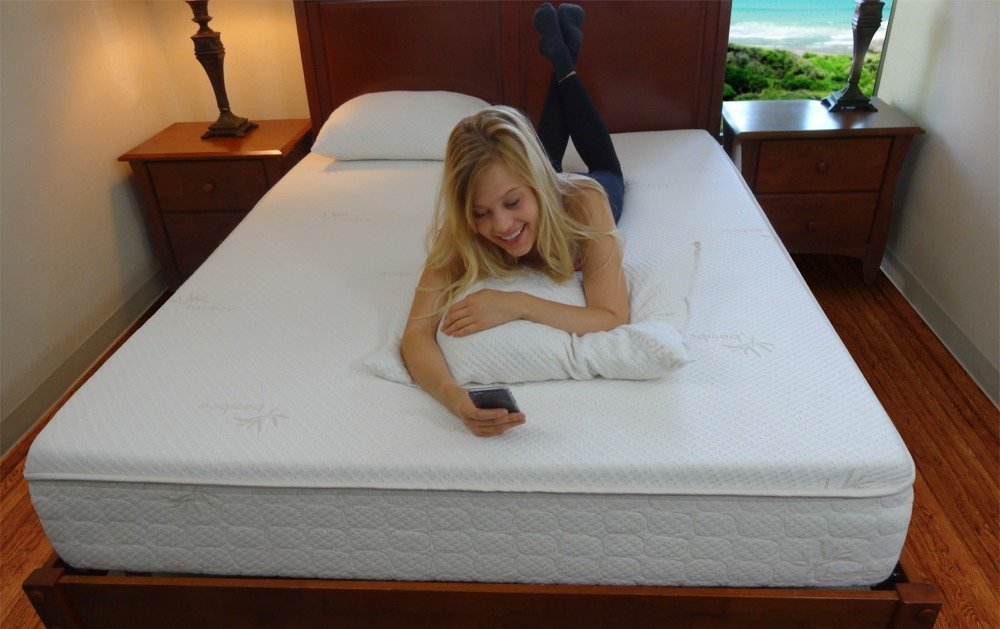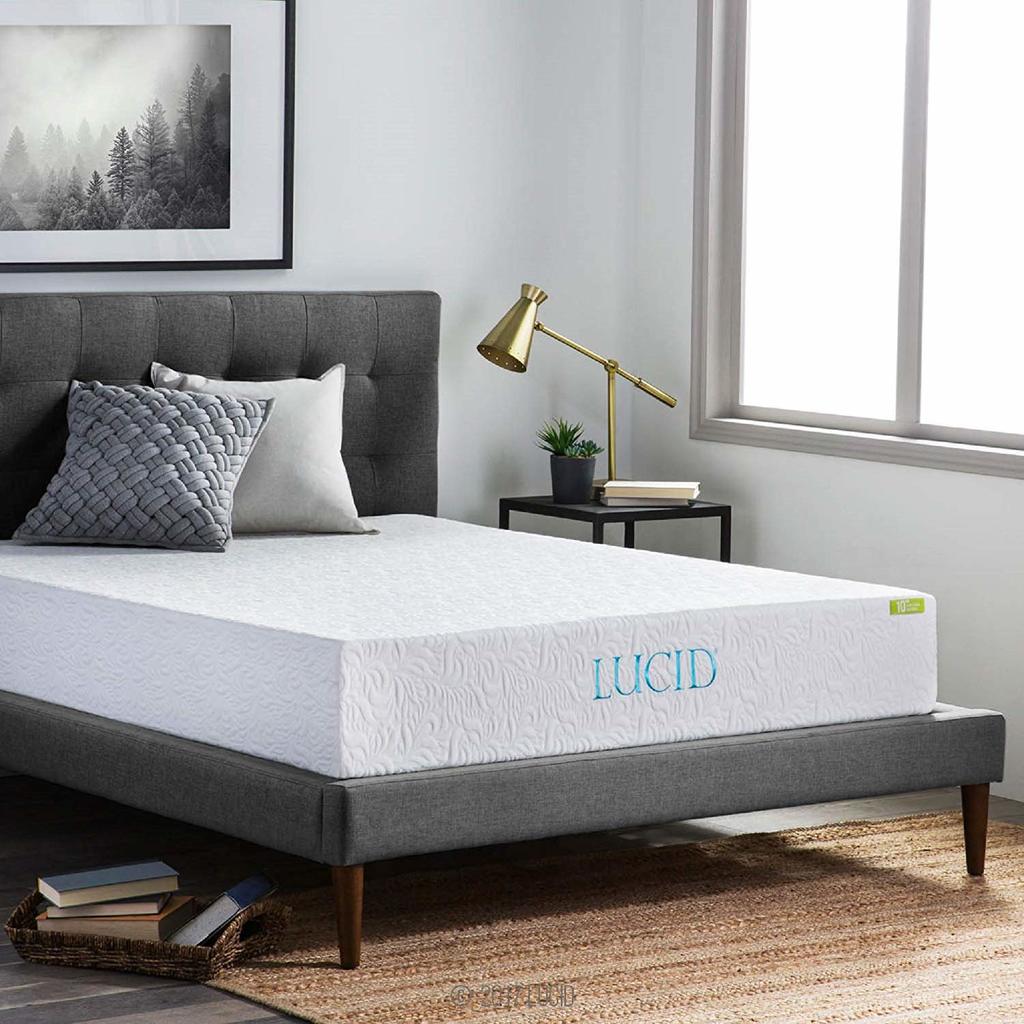Best Hypoallergenic Mattresses for Dust Mites Allergies and Asthma Sufferers
Having trouble sleeping at night? Waking up to sneezing, wheezing, or itchy eyes? Then you might be having an allergic reaction. One way to ensure it does not happen again is by investing in a hypoallergenic mattress perfect for you.
Aside from exercising regularly and watching your diet, another way to stay healthy is by having quality sleep. Without proper and adequate sleep, concentration, energy, and mood get affected. In the long run, your sleeping difficulty can lead to blood pressure problems and heart diseases.
Certain medical conditions can affect one’s sleep pattern. However, a particular external factor can make your bedroom more conducive for sleeping – the mattress. You spend approximately 8 to 10 hours a day on your bed, a good-quality mattress is definitely worth the investment.
Mattresses come in different styles and purposes to suit the preferences of the customers. If you suffer from allergies or have been diagnosed with asthma, there are several hypoallergenic mattresses available in the market for you. Read on to find out.

Mattress For Allergies & Asthma Buying Guide
What are Hypoallergenic Mattresses?
There are plenty of mattress types in the market. It can easily get overwhelming to choose one. Being an allergy or asthma sufferer, the best type of mattress for you is the hypoallergenic variety.
By simply lying on your bed at night, you are also making your mattress an ideal home for dust mites. The heat generated from contact and the skin and moisture you continuously impart to your bed every night help make your mattress a nice breeding ground for allergens like dust mites and bacteria.
If you have a very sensitive immune system and have been a long-time allergy sufferer, then you will need something more than a typical mattress. A lot of consumers are not aware that typical mattresses can contain some traces of flame retardants and a wide range of potentially toxic chemicals.
A hypoallergenic mattress can help in the reduction of your trigger factors, be it bacteria, mold, or dust mites. This mattress can prevent easy penetration by dust mites. Usually, this mattress type adds features that can decrease the chances of developing allergic symptoms. Aside from the impenetrable material, some also advertise their anti-allergy covers.
There are other mattresses similar to hypoallergenic ones in the market. There are the anti-allergy, non-allergic, or allergy-free mattresses. These are all intended for people who want to put an end to their daily and nightly wheezing.
What Materials Are Hypoallergenic Mattresses Made From?
Most manufacturers use natural and organic materials to avoid any allergic reaction. The choice depends on the consumer. Generally speaking, for hypoallergenic mattresses, the whole green movement is at large. A hypoallergenic mattress can either be memory foam or latex foam. Each has its own advantage.
1. Memory Foam
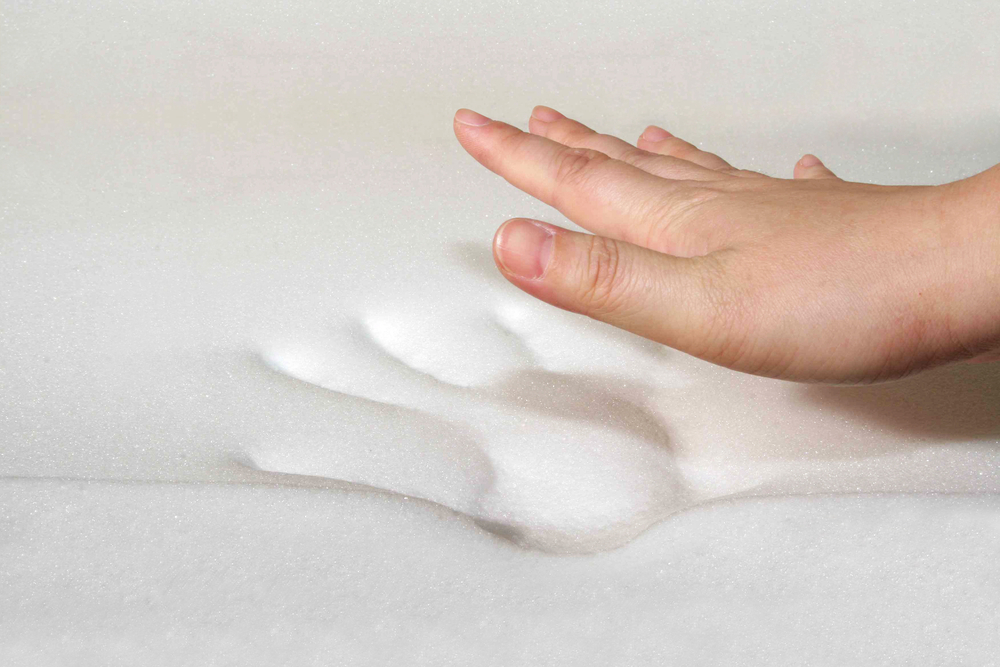
The memory foam mattress is great for allergy sufferers. It prevents irritants and triggers while providing great sleep support at the same time. It can be made of natural ingredients and does not require coils as a coil spring mattresses would have.
Coils tend to collect dust and lead to build-up which can be irritable to a person who has allergies or asthma. Dust mite and their waste products can cause sneezing, breathing problems, itchy eyes, and headaches. With the memory foam’s natural composition and compactness, there is no way they can linger and thrive in your hypoallergenic mattress.
2. Latex
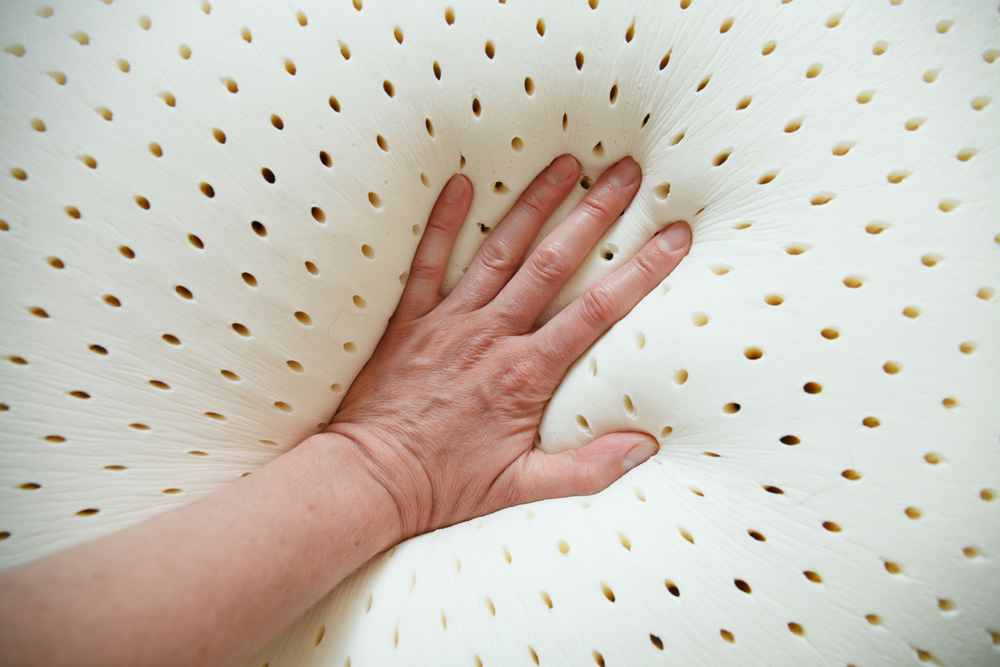
Latex also boasts of natural component. Latex is favorable for allergy sufferers because the latex can remain cool. As you know, allergens like bacteria and dust mites enjoy warm and humid areas. Latex mattresses also come without springs or coils, so there will be no accumulation of dust in these areas.
What Is The Difference Between Latex And Memory Foam?
Hypoallergenic mattresses’ material of choice is memory foam. Why? To start with, there is a small percentage of people who do not respond well to latex.
Hypoallergenic Effects
- Latex Foam can cause irritation in some people if the materials used are synthetic. However, it is not too common. Hypoallergenic mattresses are made of natural latex from rubber tree sap and contains no irritants.
- Memory Foam is usually made with synthetic materials. But like in latex foam, only natural materials are used in hypoallergenic mattress to repel allergens and dust mites
Feel
- Latex can be a bit unresponsive to the body. It does provide cushioned support. Most latex mattresses have bouncy feel to them. Because of its buoyant nature, it can isolate movements and prevent your partner from waking you up at night.
- Memory foam is known for its incredible support. After all, it is considered as a “giving” mattress. It alleviates painful pressure points and minimize extra movements.
Off Gasing
- It is not common for latex to emit notorious gasses upon unboxing.
- Memory foam has the tendency to do so upon unboxing. It can be dangerous to kids and pets.
Smell
- Latex is known for elicit bad smell. Most manufacturers recommend letting it air out before use. The smell does go away, but it can take a long time.
- Like latex, memory foam has a strange smell. However, it is not as notorious as latex.
Lifespan
- Latex can last longer because it has customizable layers that can be replaced easily. Natural latex came from processed rubber tree sap and it can withstand up to 15 years.
- Memory foam can last up to seven years. It has quite a shorter than an average lifespan compared to other mattress types.
Cost
- Latex is more expensive than memory foam. A queen size bed’s average cost is $1,900 to $2,000.
- Memory foam is cheaper. A queen size bed’s average cost is from $1,000 to $1, 100.
The choice ultimately relies on you. Both are ideal for allergy and asthma sufferers but differ in some traits.
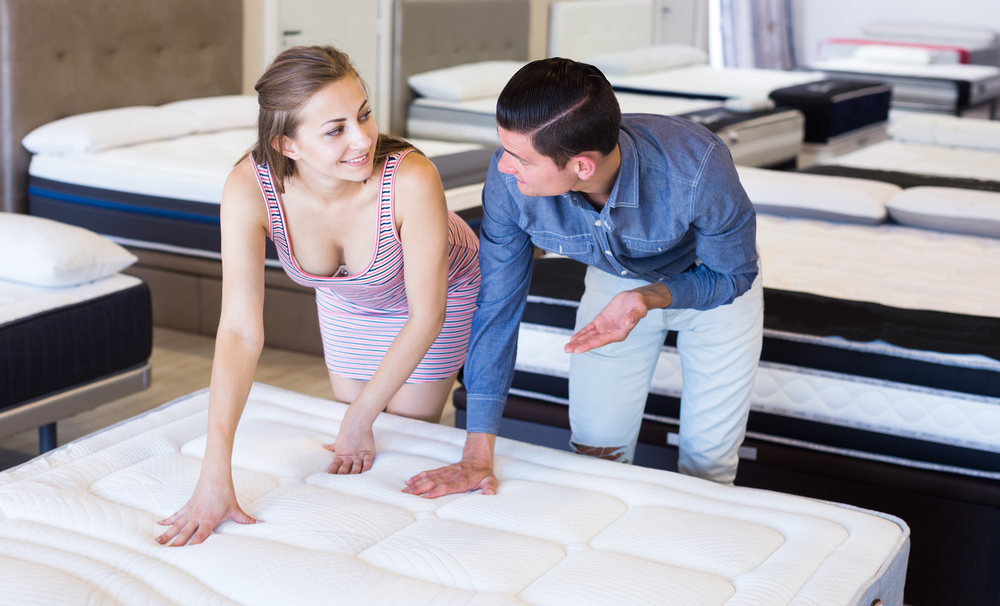
What Is The Difference Between Hypoallergenic And Anti-allergy?
Hypoallergenic does not cover all the bases related to allergies. Hypoallergenic means that this particular mattress or other products will not trigger an allergic reaction.
Anti-allergy is broader in a sense. Anti-allergy mattresses have been treated to prevent the progression of allergens, such as dust mites. Additionally, it also provides protection from the said allergens.
Non-allergenic is also another term you may see in products such as mattresses that do not elicit an allergic reaction. However, allergens can still reside in it.
Can I Buy A Hypoallergenic Cover For My Old Mattress Instead?
Mattresses are not cheap. You probably scoured online and in-stores just to find the perfect mattress for you before you settled with one, so it is understandable if you cannot let go of your old mattress just yet.
While buying a hypoallergenic cover is not entirely a bad idea. Realize that if your mattress is infested by dust mite or other allergens, your hypoallergenic cover may not cut it. You have to make sure that these allergens are completely eradicated before you put on a new cover.
Better yet, once you buy a mattress, buy a mattress protector or cover to double the defense measure. Contrary to what many people think, covers are more than just something nice. They can keep your mattresses in pristine condition for a long time.
When buying a cover, consider the breath-ability and protection that it can provide. It should easily protect your mattress from liquids and add more insurance in keeping away the allergens.
Hypoallergenic mattress covers can either be of bamboo, latex, polyester, wool, and cotton. These materials are all allergy resistant even if they all have different advantages over the other. For example, bamboo, cotton, and wool are softer and more comfortable than others, but polyester and latex are water-resistant and more effective in preventing allergies.
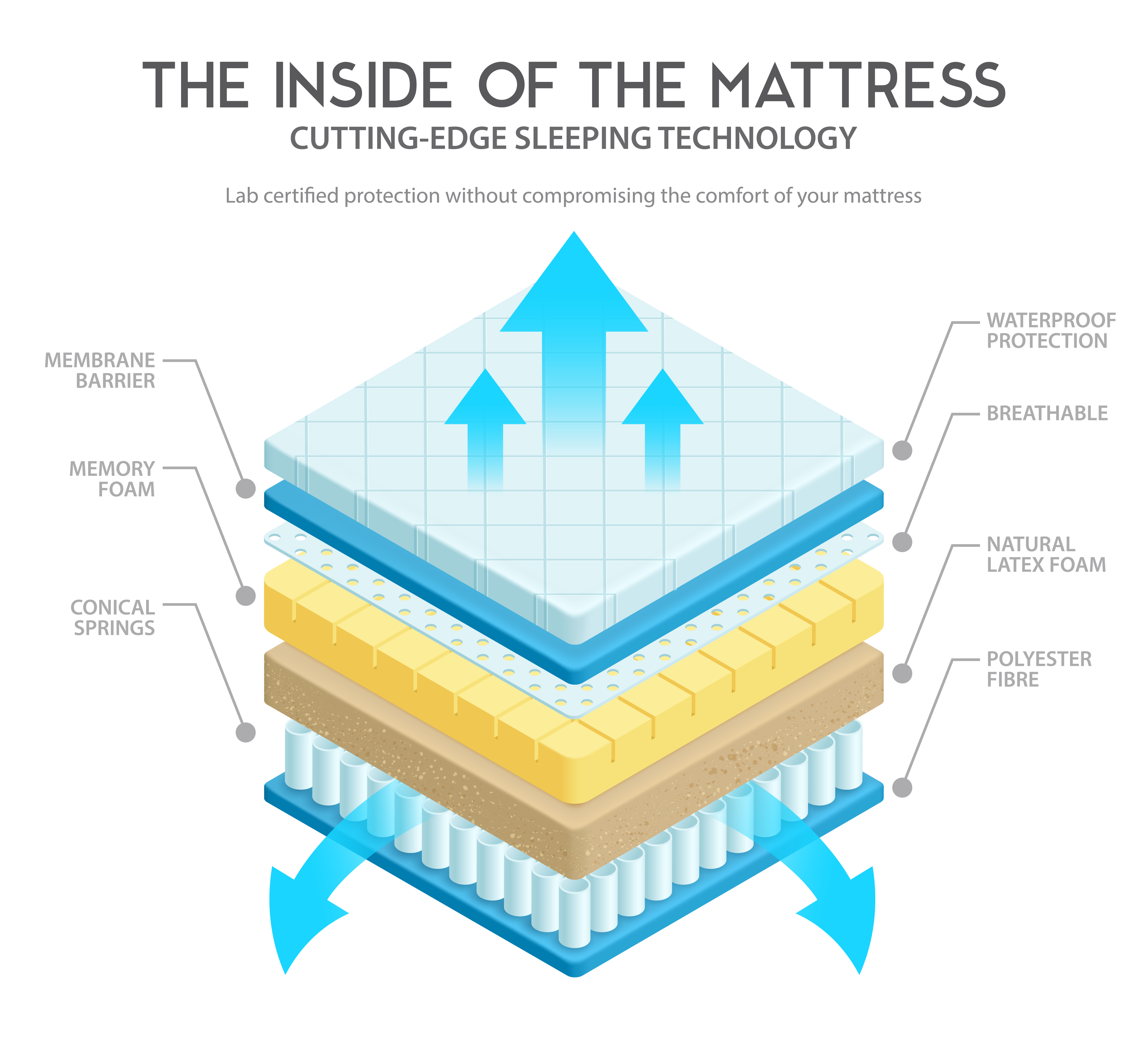
What Else Should I Consider When I Buy A New Mattress?
Aside from your preferences and needs, there are other factors to consider when purchasing a new mattress.
Your Body Weight and Height
When it comes to mattresses, size matters!Depending on your body weight and height, you can decide whether to get a twin size, full size, queen, or king. This can influence your spending capacity, as well. Larger and thicker mattresses are pricier than others. Buying a mattress is no joke. You must make sure that you considered your space, your height, your weight, and what you need.
Sleeping Position
Everyone prefers one position that can bring them a decent night’s sleep. There are three types of sleepers – back sleeper, side sleeper, or stomach sleeper. It is common to change positions while sleeping, but there is one predominant sleeping style for each of us. Each sleeper type has different needs when it comes to mattresses.

A back sleeper is more prone to pain than the other two. It is highly recommended for them to look for a mattress that is not too firm or too soft. It should be enough to support their spine, but comfortable enough to sleep on.
Side sleepers will not benefit from spring mattresses because it creates pressure points. Consider the density and thickness when buying a mattress.
For stomach sleepers, the pressure is in the tummy area. Having a firm mattress will help reduce the uneven distribution of pressure.
Firmness
Firmness level can be subjective. To give you an idea of the standard used in determining a mattress’ firmness, soft mattresses score from 3 to 5 on a scale of 1 to 10 with 10 being the firmest. Moderately firm mattresses score 6 to 7, while firm mattresses start from 7.5 to 9.
Budget
This is probably the most important factor when purchasing a mattress. Mattresses vary in prices. The range starts from $150 up to $5, 000. However, a lot of people are able to find reasonably-priced mattresses that they really like for no more than a thousand bucks!
Most Asked Questions Regarding Mattresses and Allergies
Thee questions contain interesting and relatable information that might come in hand for those who have allergies and asthma.
1. Can I Be Allergic To My Mattress?
Some foam mattresses can trigger an allergic reaction. Mattresses are usually made with different chemical ingredients and synthetic materials that can cause irritation. One such chemical is isocyanate, which can elicit an allergic reaction and induce asthma attacks. Occasionally, it can also cause nausea and headaches to the user. Vinyl and plastics are also common mattress materials that some allergic people react to.
Also, if your mattress is not intended for allergy and asthma sufferers, it might be home to thousands, or even millions, of allergens. Simple allergic reactions when overlooked can progress in severity.
2. What Causes Allergies In Bed?
Allergies are often a result of dust insulation. Unfortunately for some people, they are more vulnerable to the tiny particles pestering around the house. Neglecting to clean and maintain your mattress, pillows, and sheet covers can lead to dust and allergen accumulation.
Dust mite allergy is one of the most common triggers of allergies inside the bedroom. Dust mites love humid and warm areas like couches, mattresses, and pillows. Since they multiply easily, most mattresses can have three million dust mites residing in it.
Bedding materials can also lead to allergic reactions. Make sure that you do not react to the materials of your mattress by doing proper research and practicing meticulousness.
3. How Should I Clean The Hypoallergenic Mattress?
Cleaning your hypoallergenic mattress requires no additional fuss. It is similar to how you clean your regular mattress. But, yes, you still need to clean it to ensure double protection from allergens and enhance its durability.
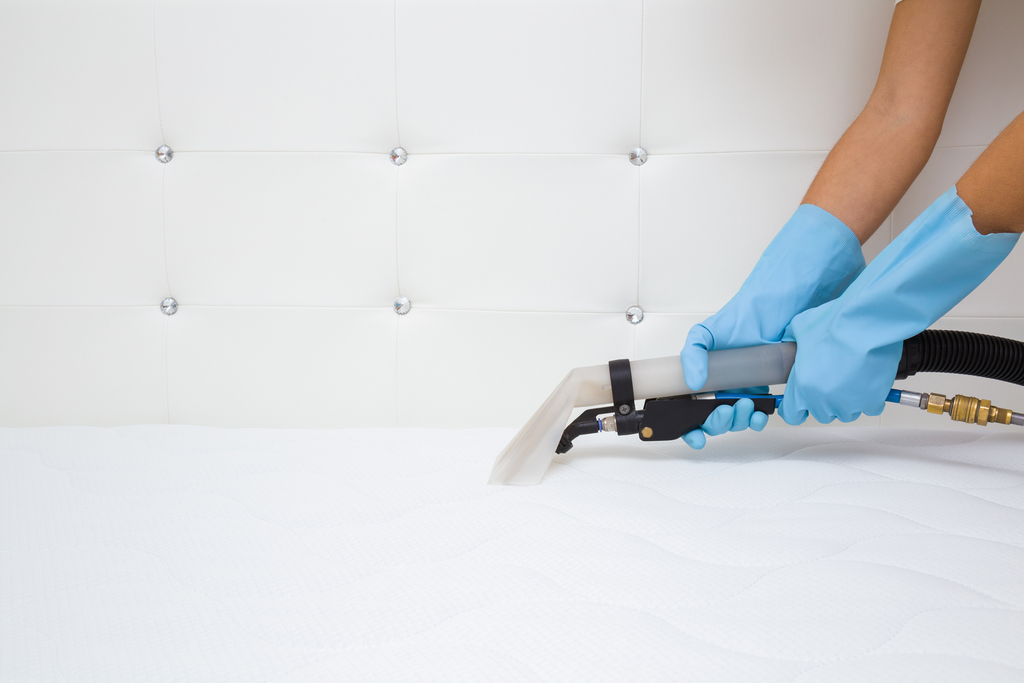
Some signs that indicate it is time for a mattress cleaning are the following:
- There is a consistent unwanted smell. That smell is not going to go away even if you ignore it.
- There are some stains. Once your mattress has stains all over it, there is no doubt you should clean it. If the stain happens to be small, you can do spot cleaning.
- You are having allergies. If you start showing symptoms of allergic reaction like nonstop sneezing, watery eyes, and the like, it warrants cleaning and other extra measures to get rid of the allergens.
To clean your mattress, try vacuuming your mattress regularly. Another method is to put it outside and allow fresh air to get seeped into the mattress.
4. How Do You Spot Clean A Mattress?
As a way to maintain your mattress’ condition, you can spot clean areas that need to be tended to right away such as spots, stains, and spills. Right after the accident, use an absorbent towel or paper towels to remove the culprit.
Avoid rubbing the towel. Dab gently. Use a non-abrasive cleaning solution to remove the stain. Use stronger products for bodily fluids like blood. Spray the solution and let it stand for five minutes. Blot away until dry. Repeat the process until there are no marks left.
5. Do I Need To Rotate Or Flip The Mattress?
Yes. Both are done to make sure that you have slept on all the areas of the mattress. Why do you need to ensure that? The pressure exerted on different surface areas gets evened out. Your mattress becomes more comfortable and durable each time you do so.
Mattress flipping is better than rotating. When you rotate the mattress, only one side gets used. Flipping allows access to the other side improving the durability in the long run. Be aware, however, that some mattress’ labels indicate that flipping is not required.
Flip or rotate your mattress once in six months.
6. Will Hypoallergenic Mattress Prevent Dust Mites In My Bed Forever?
Hypoallergenic mattresses are intended for asthmatics and allergy sufferers. You need to do your part in keeping it that way.
Cleaning your mattress regularly will go along way. You can do other ways to ensure that your bedroom is free from allergens like adding a purifier or frequent dusting.
7. Should I Stop Using Dust Mite Spray?
You do not need to use dust mite sprays regularly with your new hypoallergenic mattress. However, there is no harm in doing so. Spraying essential oils like lavender on your mattress will not only be good for your mattress. It can also promote restful sleep and a relaxing room ambiance.
Top Hypoallergenic Mattresses – Quick Comparison








Best Hypoallergenic Mattresses for Dust Mites Allergies and Asthma
1. Zinus Memory Foam Green Tea – Best Overall
Zinus Green Tea Memory Foam Mattress is made of memory foam with an additional comfort layer on top. This two inches gel infused layer is intended to keep you cool and comfy at night. While the foam below provides stable base support.
This memory foam is perfect for allergy sufferers. The mattress is infused with castor natural seed oil and green tea extract to repel bacteria and other allergens. The infusion also retards bad odors. It is available in Twin, Full, Queen, and King sizes.
Pros
- The different layers of foam make this product exceptionally cozy and enjoyable
- The gel layer facilitates smooth air flow
- The softly knitted fabric will not cause any irritation
- Has CertiPUR – US Certificate guaranteeing performance and durability
- Reasonably priced
- Hypoallergenic
Cons
- It takes about two to three days to decompress. On some occasions, it can take an entire week. The cold weather affects decompression.
Warranty
10-year warranty
Trial Period
No trial period indicated
2. Snuggle-Pedic Mattress That Breathes – Best Premium
The Snuggle-Pedic mattress has a nice airflow system that is under a patent. It promises a hundred times breathability than other mattresses. It is divided into two layers. The first one is cool and soft to touch. The second is stable and firm.
The mattress is hypoallergenic and can resist dust mite infestation. In fact, it is properly sealed to resist allergens during transit.
The pressure reliever pressure on this Snuggle-pedic mattress can accommodate different sleeper types. It allows you to change positions smoothly and supports your body fairly well. It is available in Twin, TwinXL, Full, Queen, and King sizes.
Pros
- It scores high on breath-ability even if its cover is made of bamboo
- The top layers are guaranteed soft
- It only uses non-toxic components
- It is suitable for all types of sleepers because of the Snuggle-Flex Memory Foam
Cons
- It offers comfort, but it is not quite stable
- Not that cheap
Warranty
20-year warranty
Trial Period
4 months
3. LUCID 10 Inch – Best natural latex mattress
The latex is a mix of memory foam at the bottom and a 3-inch natural latex layer. It helps ensure that you sleep great, even in summer. The mattress is also responsive to movements.
With its natural components, it is resistant to the development of allergens and irritants. Its available in Twin, Twin XL, Full, Full XL, Queen, King, and California King sizes.
Pros
- Made with the proper combination of memory foam an natural latex
- The breathable latex ensures refreshing waking up moments
Cons
- It is not as snug as other materials
- It does not do well with responding to different pressure points
Warranty
10-year warranty
Trial Period
No trial period indicated
4. Signature Sleep Memory Foam – Best Low Budget option
Signature Sleep Memory Foam Mattress is good for sharing. It is very firm, you will not feel your partner shifting every night. Its high-density foam can feel like a hug as you sleep.
Made with eco-friendly materials, it will not cause any allergic reaction. It has a certiPUR-US certified foam wrapped up in a breathable knitted fabric. It is available in Twin, Full, Queen, and King sizes.
Pros
- Very cheap
- Experience no sleep disturbances
Cons
- It can get warm in the summer time
- It is not as comfortable as most memory foam mattresses
- The memory foam is located only on top
Warranty
10-year warranty
Trial Period
N/A
5. Best Vegan Mattress: The New Avocado Vegan Mattress
The Avocado mattress is 100% natural. It has a certified organic latex. The rubber foam comes from India and promises durability, resilience, and temperature control.
It contains no wool. It has GREENGUARD Gold Certificate by UL, which means it contains no fire retardant chemicals and barrier cloth. The mattress covers are made with organic certified cotton.
The needle tufting done on this mattress reassures that no solvent or adhesives are used in binding the layers together. It is available in Twin, TwinXL, Full, Queen, King, California King sizes.
Pros
- The materials used will not cause any irritation or trigger allergies
- High durability, thanks do the needle tufting done by hand
Cons
- It is quite expensive
- The product is only available online
- Not available on Amazon
Warranty
10- year warranty
Trial Period
100-day guarantee
Summary
There are some important factors to consider in buying, such as size, firmness, materials, spending power, personal preference, and special needs. As an allergy or asthma sufferer, you need to think about your condition. All of the aforementioned mattresses are guaranteed to help make bedtime more comfortable for you. The Zinus Green Tea Memory Foam Mattress is one of the cheapest and most promising options for people who want to put an end to all the sneezing and wheezing.
Purchasing a hypoallergenic mattress requires diligence and patience. It is not an easy task. But once you experience the first night on your new mattress, you will regret why you have not bought it sooner.
Best Non-Allergenic Carpets and Rugs for Asthma and Allergy Sufferers
Most people would consider carpets worse for those with allergies. After all, it collects so much dirt and dust that just lingers in the carpet unless cleaned properly.
However, that dust and dirt or pet dander, which can be a major trigger for asthmatics and those with allergies, is collected in the carpet as opposed to kicked up into the air.
With hardwood and laminate flooring, there is nowhere for the dust to go except the air.
Eat To Your Heart’s Content Without A Runny Nose
Have you ever experienced a runny nose when eating?
You know how it gets that way when you are eating spicy foods, right? However, if it occurs just about every time you eat, then something may be wrong.
The truth is runny noses occur for a variety of reasons. It can be due to infections, irritants, or different types of allergies. Rhinitis is the medical term for runny noses. Other symptoms that go with a runny nose are congestion, nasal itching, sneezing, and post-nasal drip.
Best Dehumidifiers for Dust Mites and Allergies
If you suffer from allergies or have a house filled with dust mites, you’ve likely been advised to get a dehumidifier.
Dust mites increase in population when the relative humidity is more than 50% and decrease in population when the relative humidity is below 50%.
Humidity control is a decisive factor for dust mites population growth.
Best Robot Vacuum Cleaners for Allergies and Pet Hair
For most people, vacuuming is a hated chore. That’s why robotic vacuums are such a welcome innovation.
With a smart vacuum, people don’t have to spend an excessive amount of time keeping the floors clean. They can set up the robovac to get the job done for them.
That’s good news, because the accumulation of pet dander, hair, dust and pollen tracked in from outdoors can wreak havoc on anyone who has allergies.




